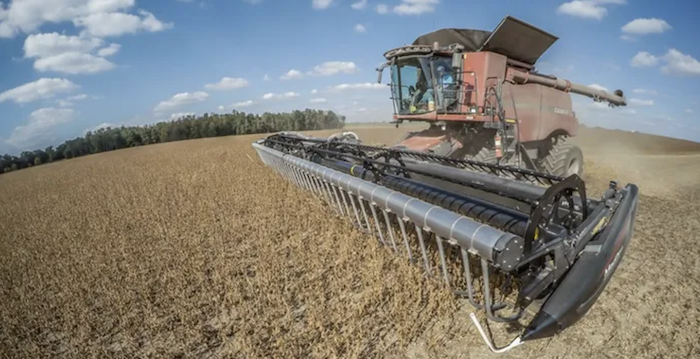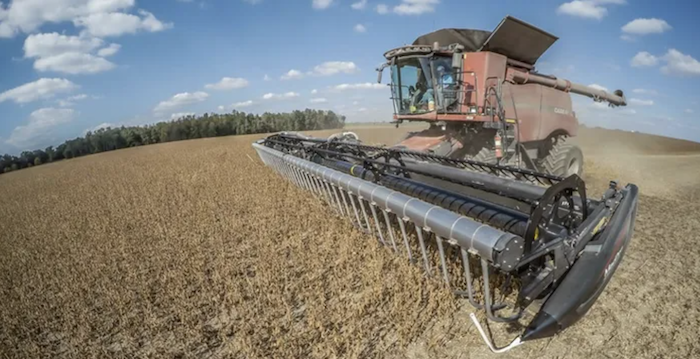The implementation of an air-assist harvest system with a S3 AWS Airbar has been a game changer for Tipp City, Ohio, no-tiller Steve Hodge, and Huron County, Ont., no-tiller Perry Lealess.
The no-tillers recently joined No-Till Farmer editor Noah Newman for a webinar to discuss how the S3 AWS Airbar is maximizing their yields while improving overall harvest efficiency.
WATCH: No-Till Farmer's Noah Newman and S3 AWS Airbar's Zac Corbin lead a panel discussion about air-assist harvesting with no-tillers Perry Lealess and Steve Hodge.
“The AWS Airbar speeds up harvest in a couple ways,” Hodge says. “We can start an hour earlier in the morning and work an hour later in the evening. We’ve increased our ground speed by 1 mile per hour, which makes a huge difference by the end of the season for us. It’s also helped deal with variable soybean heights caused by different weather extremes.”
“Many growers in our region were getting tired of having to pull in dry beans,” Lealess says. “We don’t have a lot of full-time help, so we didn’t have the manpower to pull beans at night and harvest all day. But we didn’t want to give up on the dry beans because we like them in the rotation. We gave the AWS Airbar a try to see if we could clip the dry beans. It worked. It’s also a game changer with short soybeans.”
The S3 AWS Airbar is available for both draper and auger headers. It employs a single-channel, wraparound, closed-circuit air system. With the fan and chassis centrally located on the combine header and powered by the feeder house reverser gear, the airflow gravels around the back of, and across the front of the header from a single airflow channel.
Hodge says his yields have gone up 1.5-2 bushels per acre on average with air-assist harvesting. In a drought year, like 2023, the yield impact could be even higher.
“When you have short crops in a dry year, the Airbar helps even more,” Hodge says. “It’s a challenge to get crops in the combine, but with the Airbar we can just pick those soybeans up as they shatter mid-air and float up onto the belt.”

Lealess learned early on he could take somewhat of a “set it and forget it” approach with air-assist harvesting.
“You can drive yourself crazy moving that air, and you’re probably hurting more than helping,” he says. “If you move the nozzles too much, you’re blowing underneath the table or not blowing on the knife. Now I just set it and leave it alone.”
“My first big learning experience was discovering the volume of air that was required to make the Airbar work well,” Hodge says. “Our first mistake was we had too much air. The fans on the Airbar have tons of capacity. I soon learned the best thing to do was to start low and keep working up. I remember the first day we ran it, you could have so much air that it would blow soybeans over the back of the head. Beyond that, it’s fairly easy to run. Everything is adjustable from the cab.”
“Once in a while I sit back and focus on a bean that’s on the bar and watch it get chased in,” Lealess adds. “Some of the bigger dry beans are easier to watch, but even the soybeans, you get one that’s been shattered — it’s sitting on the knife, and you can see it go up on the belt or the table. It’s neat to see that.”
Related Content
Harvest Considerations For Viable Soybean Maturity








Post a comment
Report Abusive Comment